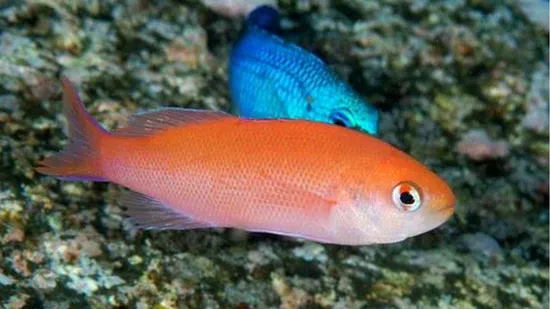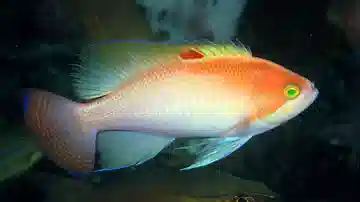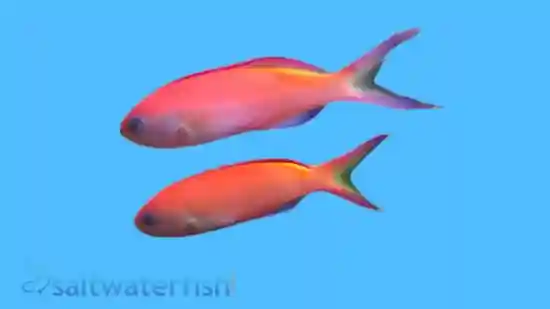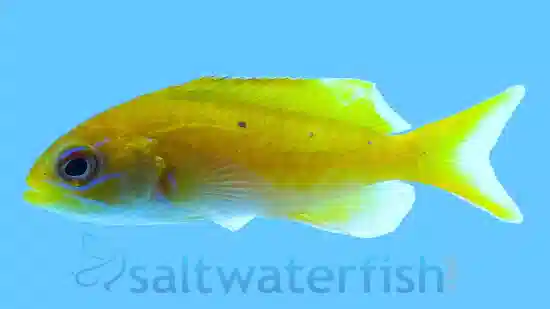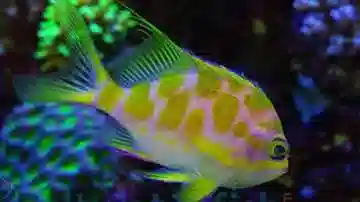Borbonius (Blotchy) Anthias
Odontanthias borbonius
(0 Reviews)
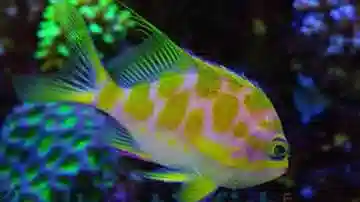
Borbonius (Blotchy) Anthias
Odontanthias borbonius
(0 Reviews)
{{ item.name }}
Size: {{ item.extra_field_3 }}
${{ getFormattedPrice(item.saleprice) }} ${{ getFormattedPrice(item.price) }}
To join the waiting list, click here
Free Shipping
With
$199.00
or more in Marine Life.
More details...
Borbonius (Blotchy) Anthias Care Facts
| Care Level: | Moderate |
|---|---|
| Temperament: | Peaceful |
| Diet: | Carnivore |
| Reef Safe: | Yes |
| Minimum Tank Size: | 100 gallons |
| Max Size: | 6 inches |
Blotched Anthias (Odontanthias borbonius): An Overview for Saltwater Marine Aquariums
In marine aquariums, the Blotched Anthias, scientifically known as Odontanthias borbonius, stands out as a vibrant and captivating species. This informational guide offers valuable insights into the Blotched Anthias, including its habitat, reef compatibility, size, lifespan, dietary needs, aquaculture availability, and much more. Whether you're a seasoned hobbyist or just starting, this information will help you decide to keep this species in your saltwater aquarium.
Habitat of the Botched Anhias
The Blotched Anthias is native to the Western Indian Ocean, specifically around the islands of Réunion and Mauritius. In the wild, they inhabit deep-sea coral reefs and are often found in areas with strong currents, typically between 200 and 300 feet (60 to 90 meters) deep.
Reef Compatibility of the Blotched Anthias
The Blotched Anthias is considered reef-safe and compatible with coral and other invertebrates in a reef aquarium. They do not exhibit destructive behaviors that can harm corals or the reef structure.
Size and Lifespan of the Blotched Anthias
These anthias are relatively small, with adult males typically reaching a maximum size of about 4 inches (10 centimeters), while females are slightly smaller.
Lifespan and Diet of the Blotched Anthias
With proper care, Blotched Anthias can live for several years in captivity. They have an average lifespan of 5 to 7 years. Blotched Anthias primarily feed on zooplankton and small crustaceans in their natural habitat. To replicate their diet in captivity, offer a diverse range of foods, including high-quality marine pellets, frozen foods like Mysis shrimp and brine shrimp, and live foods if available. Regular, small feedings throughout the day help mimic their natural feeding behavior.
Sexual Dimorphism of the Blotched Anthias
The Blotched Anthias exhibits sexual dimorphism, where males and females have distinct visual differences. Males are typically larger and display vibrant colors, including an orange-red body with striking purple accents. Conversely, females have more subdued coloration, often appearing in shades of red and yellow.
Symbiotic Relationships of the Blotched Anthias
The Blotched Anthias is not known for specific symbiotic relationships with other species in their natural habitat. However, they are often found in loose groups or schools, which can provide safety from predators.
Juvenile vs. Adult Coloration of the Blotched Anthias
The juvenile Blotched Anthias often have a more uniform, red-pink coloration with less prominent purple markings than adult males. Their colors intensify as they mature into adults.
Compatibility and Temperament of Blotched Anthias
Understanding the compatibility of the Blotched Anthias with other tank inhabitants is critical to ensuring a harmonious community. They are generally peaceful but can become aggressive towards conspecifics (members of the same species) if kept in small groups. To mitigate aggression, keeping them in larger groups or as a single male with several females is recommended.
Suitable Tank Mates for the Blotched Anthias
Here are five compatible tank mates that can coexist peacefully with the Blotched Anthias: Clownfish, blennies, dottybacks, tangs, and gobies.
Tank Requirements for the Blotched Anthias
The blotched anthias requires a tank with a capacity of at least 100 gallons is recommended for a small group of the Blotched Anthias. Larger tanks provide more swimming space and help reduce territorial disputes. Create a well-structured aquascape with plenty of hiding spots, live rock, and caves. This mimics their natural habitat and provides shelter and security.
Water Conditions for the Blotched Anthias
Maintain a stable pH level between 8.1 and 8.4. Keep the salinity within the range of 1.023 to 1.025. The recommended temperature range is 74°F to 78°F (23°C to 26°C). Moderate to strong water flow helps replicate their natural environment.
Other Common Names for Blotched Anthias
The Blotched Anthias may also be known by other common names such as Borbonius Lyretail Anthias, Borbonius Anthias, or the Blotchy Anthias.
Why Choose the Blotched Anthias from Saltwaterfish.com
Choosing the Blotched Anthias from Saltwaterfish.com ensures you acquire healthy and responsibly collected specimens from trusted sources. We prioritize the well-being of marine life and provide top-quality fish that are carefully selected and handled to ensure a smooth transition to your aquarium. The Blotched Anthias can add a splash of vibrant color and elegance to your saltwater aquarium, making them a desirable choice for marine enthusiasts.
Currently Borbonius (Blotchy) Anthias does not have any reviews.


